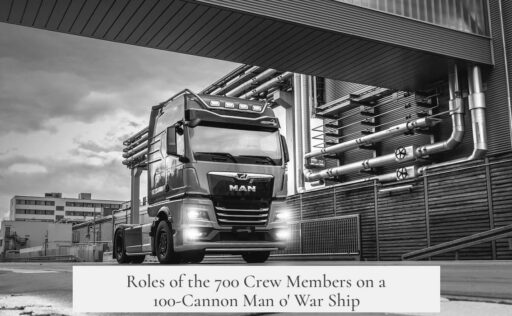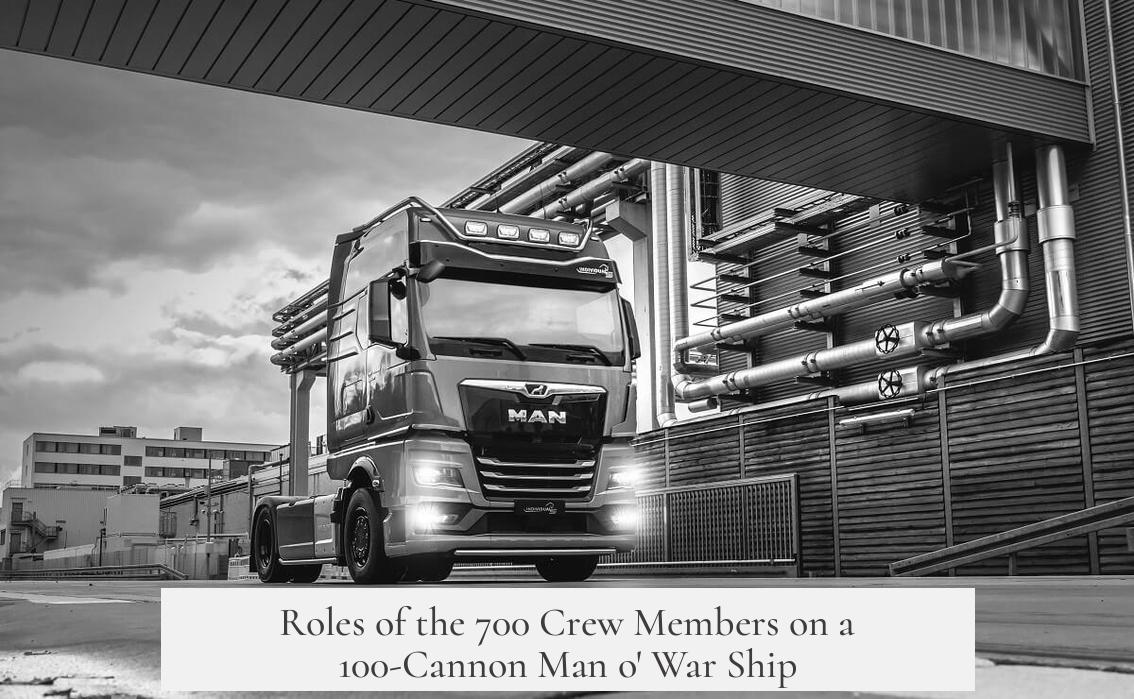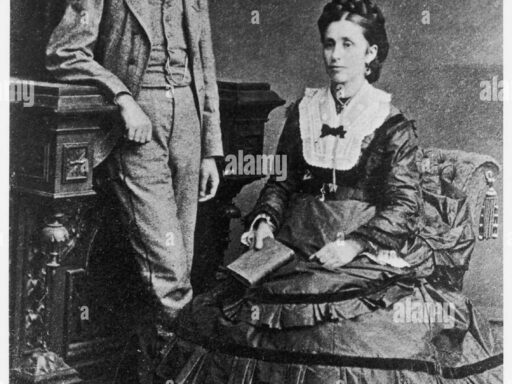A crew of about 800 men onboard a Man-o’-War or a Ship of the Line with over 100 cannons includes far more than just gunners. Besides the roughly 13 men per gun pair assigned to operate the cannons, the vast remainder support navigation, sailing, gunnery, maintenance, medical care, security, and logistics. These roles combine to ensure the ship functions efficiently during battle and routine operations.

On such a ship, only about 25-30% of the crew might be directly manning the guns during combat. For instance, every two guns (one on each side of the ship) required a battery crew of approximately 13 men. These crews included sailors, marines, and petty officers. Several roles overlapped, as the same group might operate the gun currently facing the enemy and then switch to the opposing gun after maneuvering. A midshipman or a mate supervised each pair of guns, while lieutenants commanded groups of guns by deck.
Marines were integrated within gun crews to bolster manpower and handle boarding actions. Each battery crew included several marines to avoid over-depleting any particular station if called away for offensive or defensive boarding. Special teams formed boarding parties split by divisions under lieutenants, incorporating marines and selected sailors armed with pikes or tomahawks.

The captain and four lieutenants directed the ship’s combat and navigation activities. The first lieutenant typically oversaw the quarterdeck guns. Other lieutenants managed main and forecastle gun decks in sections, coordinating personnel and firepower. Midshipmen, apprentice officers who were young boys or teens in training, led individual gun crews and learned command responsibilities.
The ship employed numerous warrant and petty officers, each a specialist in an essential trade. Warrant officers required licensing and examinations to qualify for roles such as master navigator, surgeon, gunner, boatswain (in charge of rigging and sails), carpenter, and purser. Petty officers were experienced sailors appointed for technical duties, including mates assisting midshipmen, carpenter’s mates, and others. These officers maintained ship readiness beyond firing guns.

Support personnel formed critical parts of the crew. Ship’s boys functioned as assistants and ran messages. Cooks prepared food for hundreds of men. The cooper handled barrel maintenance crucial for storing food, water, and powder. Surgeons, their assistants, and loblolly boys (apprentices to surgeons) cared for the wounded, operating from below decks in designated infirmaries.
Safety and ship integrity depended on roles like the carpenter and his assistants, who monitored and repaired hull damage during battle. Damage control teams continuously checked water levels and patched leaks below the waterline. Fire-fighting personnel were assigned to handle any outbreak of fire, a constant hazard during combat given the use of gunpowder.

Ammunition handling and supply required a complex chain of command and manpower. The fore and aft magazines—the ship’s powder rooms—had assigned guards and workers such as gunner’s mates, gunner’s yeomen, purser’s stewards, marines, and sailors, who ferried powder and cannonballs efficiently to the gun decks. This ensured a steady supply of munitions during intense firing without compromising safety.
Security and order fell under the master-at-arms and his assistants, functioning as the ship’s police. They monitored discipline, ensured morale, and prevented cowardice or disorder, especially in confined spaces like the light room. Messengers relayed orders throughout the ship, keeping communication fast and clear amid chaos.

The crew also managed sailing operations. Sailors operated the rigging, sails, and helm. Quartermasters helped steer and managed navigation alongside the master officer. Several sailors were designated as topmen, stationed high in the masts to observe and fire muskets during combat or make sail repairs swiftly.
The ship trained future officers within its crew. Midshipmen prepared for commissioned officer ranks by learning navigation, command, and battle management. Some mates—experienced seamen—were promoted into junior officer roles, serving as gun captains or division leaders. Ship’s boys provided menial support while beginning their naval careers.

| Role Category | Functions | Approximate Crew Size |
|---|---|---|
| Gunners and Gun Crews | Operate and manage each cannon pair, load, aim, and fire. | ~350-400 (13 per gun pair) |
| Marines | Supplement gun crews, boarding parties, ship security. | ~50-100 |
| Officers and Midshipmen | Command and control of ship, guns, divisions. | 40-70 |
| Warrant and Petty Officers | Specialists in navigation, carpentry, gunnery, medical, supplies. | 50-80 |
| Support and Auxiliary | Surgeons, cooks, coopers, powder handlers, messengers. | 80-120 |
| Security and Discipline | Master-at-arms, corporals to maintain order. | 5-10 |
| Damage Control | Carpenters and repair teams monitoring hull and fire hazards. | 5-15 |
| Sailors and Rigging Team | Manage sails, rigging, helm, lookouts. | 100-150 |
Each man’s role was highly defined, but flexibility was common, especially during battle. Men not directly at the guns might assist with powder supply, fight fires, carry orders, or prepare boarding parties. Maintaining the ship’s functionality required intricate coordination. Crew members often doubled up roles, shifting as circumstances demanded.
This organizational design allowed the Man-o’-War to deliver overwhelming firepower while maintaining operational integrity on long voyages and in chaotic combat environments. The vast crew was essential for both the offensive and defensive duties a ship of this size demanded.

- Only about 25-30% of the crew actively manned cannons during battle.
- Marines supported gun crews and formed specialized boarding parties.
- Warrant and petty officers provided expertise in navigation, repair, and gunnery.
- Support staff managed food, medicine, ammunition, and ship maintenance.
- Damage control and fire prevention teams ensured survival after hits.
- Security personnel maintained discipline and order onboard.
- Midshipmen and mates trained future officers and commanded small units.
- Efficient ammo supply chains enabled sustained cannon fire.
Inside the Human Machine: Who Were the 700 Extra Men Sailing a 100-Cannon Man-o’-War?
Apparently a crew of around 800 men was needed to sail a Man o’ War or Ship of the Line carrying 100+ cannons. What were the roles of the other 700 (or so) men? At first glance, you might think those 100 cannons require 100 gunmen, or maybe 200 if you double up for shifts. But no. Each cannon needed an entire team, and beyond that, an ocean giant like the HMS Victory required an orchestra of specialists, sailors, officers, marines, and support staff to stay afloat, fight, and function. Let’s dive into the intricate human web behind the mighty ship and explore what these 700+ men actually did.
The Gun Crews: Not Just Pulling the Trigger
Let’s start by busting a simple myth. The 100 cannons on a ship like the HMS Victory don’t fire all at once; the total count includes both sides. The ship’s broadside—the guns firing on one side at a time—is about 50 guns. And get this: each pair of guns (port and starboard) required a team of 13 men. So roughly, for 50 pairs, that’s 650 men allocated for gunnery duties alone. But these men didn’t just aim and fire; many juggled multiple roles.
Each gun crew includes sailors and marines. Marines joined crews to add muscle during combat and boarding. Apart from pulling ropes and loading powder, some crew members were tasked to put out fires when cannon blasts sparked flames—fire was one of the worst enemies alongside enemy ships.
Officers and Command: The Ship’s Brain Trust
A ship this size had a top-down leadership structure. The captain, supported by four lieutenants and midshipmen (young officers in training), steered the ship and managed combat. These officers coordinated the 100+ cannon teams, monitoring firing sequences and ship maneuvers. For instance, on the famous HMS Indefatigable (though smaller with only 46 guns and ~344 men), we see 10 midshipmen and several mates (experienced sailors training to be officers).
Command also extended to gun teams, where pairs of guns were led by midshipmen or mates, and each group of pairs was controlled by lieutenants. This layered command ensured every cannon fired on schedule and operated efficiently. When boarding actions occurred, lieutenants also led boarding parties armed with pikes and tomahawks, ready to fight hand-to-hand.
Warrant Officers and Petty Officers: Specialists with a License to Skill
Beyond rank and file sailors, ships carried specialized personnel who held official warrants or appointments. These men had skills crucial for the vessel’s survival and operation:
- Master: Navigated the ship and supervised sailing operations.
- Armourer: Maintained weapons and firearms.
- Boatswain (Bosun): Oversaw rigging, sails, and deck crew.
- Carpenter: Did urgent hull repairs and patching during battle.
- Surgeon and Assistant: Administered medical care below deck in the infirmary.
- Gunner: Managed gunpowder stores and gunnery equipment.
- Purser: Handled supplies, food, and ship’s accounts.
- Chaplain: Provided spiritual care and morale support.
Petty officers formed the backbone of these specialties. For example, a Carpenter’s Mate—appointed as a petty officer—helped with hull repairs alongside the carpenter. Not everyone of these crew members was “ranked” formally like officers, but their skills were indispensable.
Support Roles Keep the Ship Running
Far from just gunners and leaders, a ship like this had a bustling support system:
- Sailors: The general deckhands handled sails, rigging, and performed many basic tasks.
- Ship’s Boys: Young helpers learning the ropes, assisting officers and sailors alike.
- Cooks and Cooper: The cook prepared meals for hundreds, the cooper made and maintained barrels essential for storing water, gunpowder, and food.
- Messengers and Security: The Master-at-Arms functioned like a police officer keeping order, backed by corporals watching areas where cowardice might creep in.
- Powder Handlers and Ammunition Crew: Moving tons of gunpowder and cannonballs required dedicated crews, including gunner’s mates, yeomen, marines, and even cooks on powder duty.
- Firefighting Teams: Special men ready to tackle fires triggered in battle by flaming cannon rounds or sparks.
Medical Staff and Damage Control
Imagine cannon fire pounding the hull and boarding skirmishes raging. Injuries were inevitable.
The surgeon and his assistant took care of wounds in a cramped infirmary below deck. They were helped by the Loblolly Boy, a young sailor apprentice. Meanwhile, the carpenter and his trusted crew worked round the clock without glamour, patching holes below waterline to prevent sinking. These men checked water levels in the ship’s wells and made urgent repairs when enemy shot battered their wooden fortress.
Logistics: The Hidden Human Supply Chain
If you envision a warship simply as sailors firing cannons, think again. It was a floating logistics hub requiring complex coordination:
- Powder magazines (forward and aft) had teams responsible for carefully storing and distributing gunpowder and shot.
- Specialized yeomen, storekeepers, and stewards ferried munitions across narrow, dangerous hallways called “magazine passages.”
- Without their work, cannon fire would grind to a halt mid-battle.
Boarding Parties and Emergency Roles
When it came down to close-quarters combat—boarding an enemy ship—the crew split into four divisions led by lieutenants, each with two midshipmen and selected sailors armed with pikes and tomahawks. This was deadly work where bravery earned respect.
Interestingly, if all boarders left their guns unattended, some guns were manned by as few as five men plus the captain in desperate situations. During fires or sail emergencies, assigned men would rush aloft to handle the sails or fight blazes.
The Human Machine at Full Scale
| Role Category | Approximate Numbers | Function |
|---|---|---|
| Gunners & Marines | ~650 | Operated and maintained all cannons; marines provided extra muscle and boarding force |
| Officers (Captain, Lieutenants, Midshipmen) | ~20-30 | Commanded ship; led gun crews and boarding parties |
| Warrant & Petty Officers | ~50-70 | Skilled specialists in navigation, carpentry, medical care, and supply management |
| Support Staff (Cooks, Cooper, Sailors, Ship’s Boys, Powder Handlers) | ~150-200 | Logistics, maintenance, rigging, meals, ammunition transport, and general duties |
| Security & Discipline (Master-at-Arms, Corporals) | ~10 | Maintained order and morale, prevented cowardice and mutiny |
So, Why So Many People?
Running a 100+ cannon ship isn’t just brute force; it’s orchestration of complex roles. Each man had a specialized job contributing to the ship’s life-and-death dance. The large crew was essential to maintain 24-hour watches, continuously operate and reload the guns, manage sails and rigging, keep the ship repaired amid battle damage, feed everyone, and preserve discipline.
Historical records from smaller ships like the HMS Indefatigable show how sailors, marines, officers, warrant specialists, and boys blended their roles into a seamless operational unit. On a top-tier Man-o’-War, these numbers scale up to roughly 800 men, explaining the massive crew beyond just the cannon operators.
Lessons from History for Modern Teams
Thinking beyond wooden masts, this structure reminds us today that large, complex endeavors require diverse skills and clear roles. From logistics to leadership, security to specialist maintenance, every part ensures frontline success.
When you read about incredible naval battles, remember it wasn’t just the cannons roaring. It was 800 men—each a small cog in a vast, human machine—that made victory possible.
Have you ever wondered what roles support an entire complex operation that seems frontline-focused? What’s one role you think is often overlooked when you see the “big picture”? Share your thoughts!
What roles did the majority of the 800-man crew on a Man o’ War perform besides manning the cannons?
Most were sailors handling sails, ropes, and navigation. Many worked below decks managing supplies, ammunition, and ship repairs. Marines maintained security and served in boarding parties.
How was ammunition supplied to over 100 guns during battle?
Special crew members like Gunner’s Mates, Yeomen, and sailors ferried shot and powder from magazines. Teams worked in coordinated supply chains to keep guns loaded continually.
What was the command structure for gun crews on the ship?
Gun crews of about 13 men each were led by Midshipmen or Mates. Lieutenants oversaw groups of gun crews, ensuring coordinated firing and defense tactics across the decks.
What non-combat roles were essential during battle on a Ship of the Line?
- Medical personnel treated wounded below deck.
- Carpenters patched hull damage to prevent flooding.
- Master-at-Arms maintained order and prevented cowardice.
- Fire brigades stood ready to extinguish fires.
How did the crew handle boarding actions while maintaining gun operation?
Boarding parties were drawn from gun crews but arranged to leave fewer men manning guns. Marines and selected sailors acted as boarders equipped with pikes and tomahawks, balancing offense and defense.




